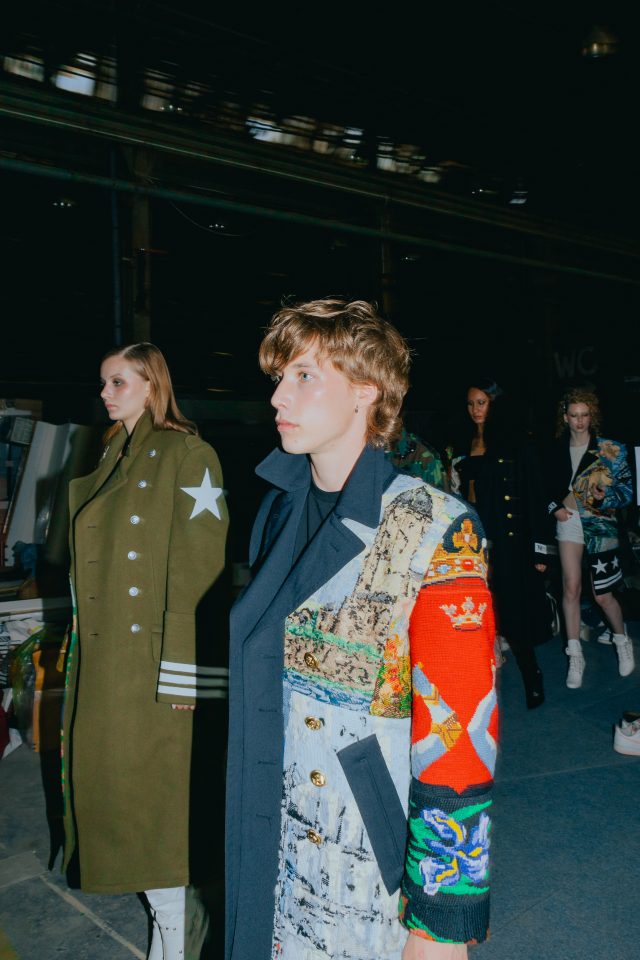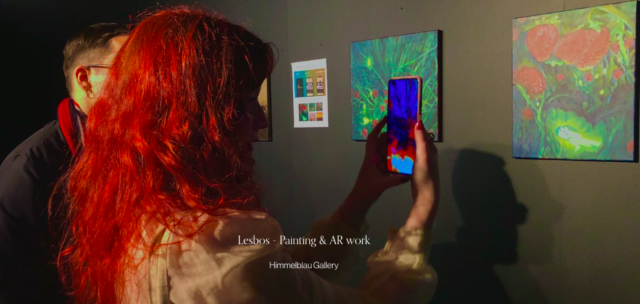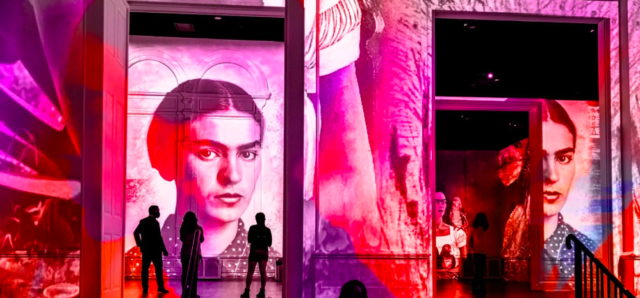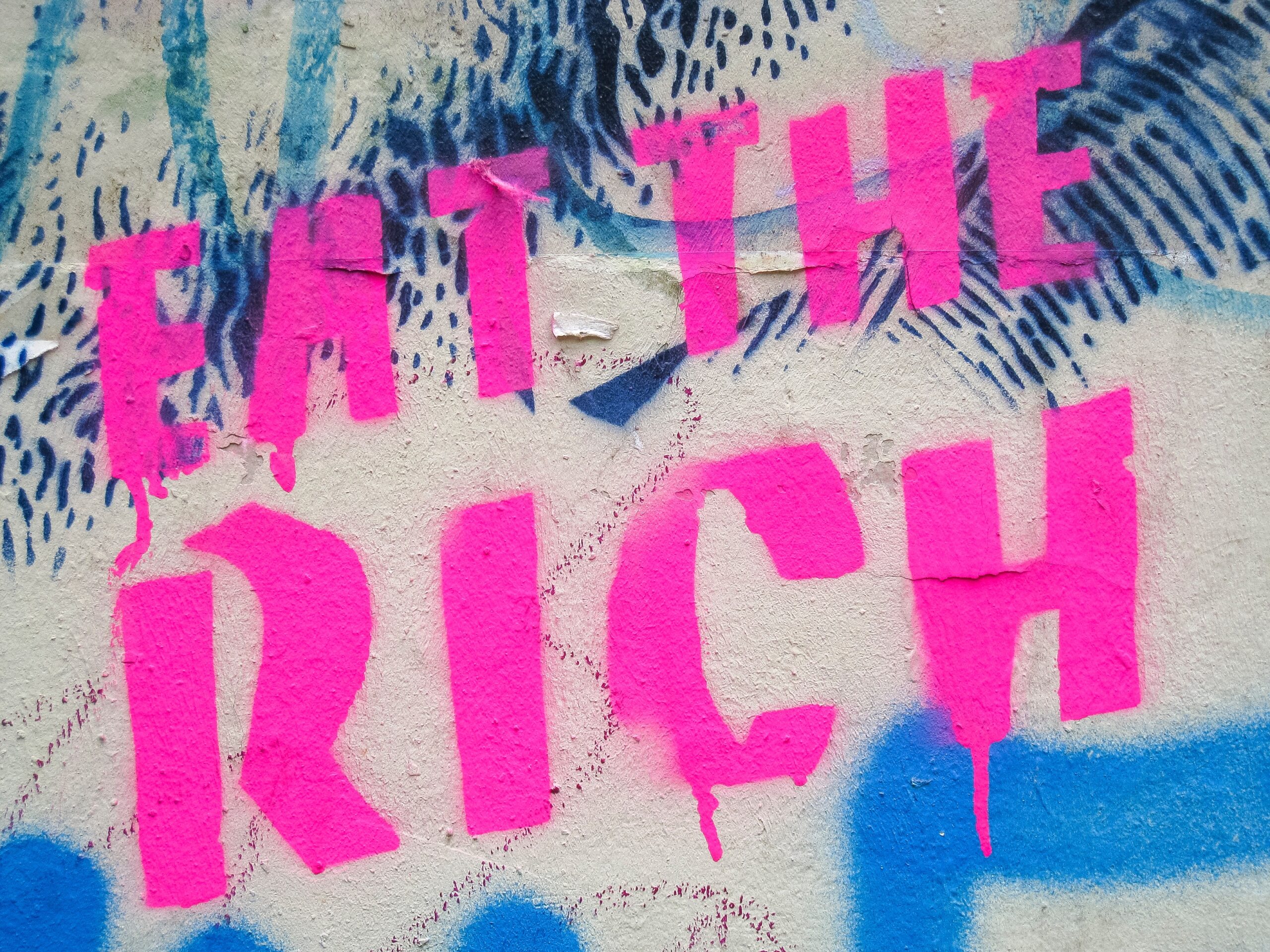The intersection of art and business is an interesting topic. And something I’ve been thinking about a lot, as I am trying my best to support my artist kids in their creative projects.
Two of my kids already have art degrees, and a third one just started studying design. They all have such great starts in their careers. Gabriella has another exhibition opening tonight, Isabella’s documentary short film is pre-screening next week, Kristian just sent off photos for a fashion magazine in California.
I see them painting, editing, filming, submitting, sculpting, developing film – working until late at night. But the money – it’s not really there. It’s not there yet, I keep reminding them (and myself) and saying “Keep going”.
Even the art and design schools here tend to teach how to apply for grants, instead of teaching sustainable business models or paths how to make a living creating art. The suggested path even is “go be a free intern” so even the art institutions and production companies can continue the scarcity mindset by getting free labor from people who just desperately need the experience.
Artists should be paid well for their work, and commercial and cultural art can coexist harmoniously.
Expecting artists to create without financial income is not sustainable or responsible.
But I’m not quite sure if this is something all artists are interested in. Does it break the rules of art? Can art be a profitable business?
 Phygital art combines physical and digital experience or art, and even some fashion designers like OOOPS are creating phygital clothing and art collections.
Many artists and art galleries have already offered phygital experiences.
For example, your physical art piece, like a painting, can work similarly as a QR code and be scanned with a tool like Arilyn creating a secondary experience. The artwork to come digitally alive, like how Gabriella adds a digital element to many of their art pieces.
Phygital art combines physical and digital experience or art, and even some fashion designers like OOOPS are creating phygital clothing and art collections.
Many artists and art galleries have already offered phygital experiences.
For example, your physical art piece, like a painting, can work similarly as a QR code and be scanned with a tool like Arilyn creating a secondary experience. The artwork to come digitally alive, like how Gabriella adds a digital element to many of their art pieces.
 Even the artwork of famous artists like Van Gogh, Kahlo, Picasso and Klimt come alive in immersive exhibitions combining digital images and audio.
Here is a picture of Frida Kahlo’s immersive experience.
Even the artwork of famous artists like Van Gogh, Kahlo, Picasso and Klimt come alive in immersive exhibitions combining digital images and audio.
Here is a picture of Frida Kahlo’s immersive experience.
 The COVID-19 pandemic catalyzed the transformation of cultural and creative industries into digital experiences, yet many creators did not see a corresponding increase in their earnings.
Per a 2022 report from UNESCO, a staggering 10 million creative jobs were lost worldwide in 2020 as a direct consequence of the pandemic, and its effects continue to linger. The cultural and creative sectors contribute significantly to the global economy, accounting for 3.1% of the world’s GDP and employing 6.2% of the global workforce. UNESCO recognizes them as a “strategic investment for economic development.”
UNESCO’s report proposes various recommendations to better support creatives. Even UNESCO acknowledges the importance of artists earning a living.
The COVID-19 pandemic catalyzed the transformation of cultural and creative industries into digital experiences, yet many creators did not see a corresponding increase in their earnings.
Per a 2022 report from UNESCO, a staggering 10 million creative jobs were lost worldwide in 2020 as a direct consequence of the pandemic, and its effects continue to linger. The cultural and creative sectors contribute significantly to the global economy, accounting for 3.1% of the world’s GDP and employing 6.2% of the global workforce. UNESCO recognizes them as a “strategic investment for economic development.”
UNESCO’s report proposes various recommendations to better support creatives. Even UNESCO acknowledges the importance of artists earning a living.
My question is: Isn’t it one of the missions of art to break the norms and boundaries, and make us question things? What makes financial boundaries so different?It’s way overdue that we break the “suffering artist” norm.
What if artists were fat cats, with no financial worries?
Let’s play with the thought that artists were making good money. They could feel often how the caviar pops between your teeth, how sunshine feels on the mornings by the sea, and how the cobblestone streets echo in Montmartre, San Niccolòi, or Kruununhaka. Would their art be different, if they could paint on a villa overlooking the Mediterranean Sea (or any sea) or in a penthouse in a cosmopolitan city? What if they didn’t have to worry about what their kids will eat or how to pay the bills? What if Elon Musk didn’t buy Twitter, but an artist did? Fine, I ruined it, right? We don’t have to think about what the capitalist world wants us to think we should do with money.Let me ask this way: Would artists with money buy more art and support more artists? Would they be more conscious about conserving our planet? Would there be more art appreciation and more creativity in the world?Even if we don’t think about the impact on the world if all artists were better paid, and we only think of the creators creating, wouldn’t more recourses positively affect their art? What if artists could create any art they wanted without having to worry about the costs of creating it? Would it be different than what they do now?
Scarcity vs. Abundance
Innovation comes from scarcity, and I get it: It is beautiful when you have to create something out of nothing, and art is born from the sheer of survival. But innovation also comes from abundance. When you feel safe and well-fed, the soul can freely wander and explore. I want to believe art in many cases inspires happiness. Then why do we have this myth that the artist should suffer? Is it time to challenge this misconception?Isn’t one of the missions of an artist to create something new? To break boundaries and dare to break myths and misconceptions?Then why can not we collectively as a creative community decide that we together can break the myth of art only being valuable when it is created for the sake of passion from the point of financial suffering? Another aspect is categorizing artists by their education and overlooking those artists who are self-taught. These ‘outsider artists’ are not included in the mainstream art world, yet they are often breaking the boundaries and how to create art that also is economically sustainable.
Art from Abundance
Could there be some positive impacts when creating art from abundance? Financial stability would allow artists to create and experiment without the pressure of immediate results. There would be no deadlines, no urgency to get it done, but get it right. Would this free exploration lead to more innovative works? What if artists had access to top-quality materials, equipment, and resources to create their dream projects with any materials? How empowering it would be to take any creative risks knowing that you have financial security? Some might argue that when you have no money, you also have nothing to lose and that’s why you also can and you have to take creative risks to try to make it. What about mental well-being when you don’t have to worry about money? What do you think, how would art look if it was created from abundance?The Current State of the Global Creative Economy
Look at the current state of the creative economy, and why even UNESCO thinks artists should make more money. Hollywood screenwriters were just on strike, asking for fair compensation and residuals for their creative work. AI artists have entered the stage, and while AI artists say it’s just another tool, it has also opened a can of exploitation and IP rights issues. Digitalization was supposed to support creative industries by creating many new business models. In many ways, digitalization democratized the art world by bypassing the traditional gatekeepers and sales venues and giving artists a way to sell directly to their audience and find their audience. But it required artists to also become marketers, salespeople, publicists, and social media managers. The metaverse and NFT boom made money for some artists. Blockchain with digital authentification, and managing intellectual property rights on blockchain sound very smart, but most of the NFT market was driven by hype, not actual added value, and it is still difficult for artists to guard their copyrights. NFT enthusiasm cooled down, but phygital art is here to stay. Phygital art combines physical and digital experience or art, and even some fashion designers like OOOPS are creating phygital clothing and art collections.
Many artists and art galleries have already offered phygital experiences.
For example, your physical art piece, like a painting, can work similarly as a QR code and be scanned with a tool like Arilyn creating a secondary experience. The artwork to come digitally alive, like how Gabriella adds a digital element to many of their art pieces.
Phygital art combines physical and digital experience or art, and even some fashion designers like OOOPS are creating phygital clothing and art collections.
Many artists and art galleries have already offered phygital experiences.
For example, your physical art piece, like a painting, can work similarly as a QR code and be scanned with a tool like Arilyn creating a secondary experience. The artwork to come digitally alive, like how Gabriella adds a digital element to many of their art pieces.
 Even the artwork of famous artists like Van Gogh, Kahlo, Picasso and Klimt come alive in immersive exhibitions combining digital images and audio.
Here is a picture of Frida Kahlo’s immersive experience.
Even the artwork of famous artists like Van Gogh, Kahlo, Picasso and Klimt come alive in immersive exhibitions combining digital images and audio.
Here is a picture of Frida Kahlo’s immersive experience.
 The COVID-19 pandemic catalyzed the transformation of cultural and creative industries into digital experiences, yet many creators did not see a corresponding increase in their earnings.
Per a 2022 report from UNESCO, a staggering 10 million creative jobs were lost worldwide in 2020 as a direct consequence of the pandemic, and its effects continue to linger. The cultural and creative sectors contribute significantly to the global economy, accounting for 3.1% of the world’s GDP and employing 6.2% of the global workforce. UNESCO recognizes them as a “strategic investment for economic development.”
UNESCO’s report proposes various recommendations to better support creatives. Even UNESCO acknowledges the importance of artists earning a living.
The COVID-19 pandemic catalyzed the transformation of cultural and creative industries into digital experiences, yet many creators did not see a corresponding increase in their earnings.
Per a 2022 report from UNESCO, a staggering 10 million creative jobs were lost worldwide in 2020 as a direct consequence of the pandemic, and its effects continue to linger. The cultural and creative sectors contribute significantly to the global economy, accounting for 3.1% of the world’s GDP and employing 6.2% of the global workforce. UNESCO recognizes them as a “strategic investment for economic development.”
UNESCO’s report proposes various recommendations to better support creatives. Even UNESCO acknowledges the importance of artists earning a living.
For creative work to truly be sustainable and responsible, it must also be economically viable.It means that artists need to make money. Featured photo by Etienne Girardet

